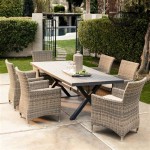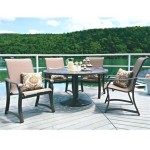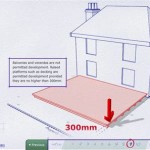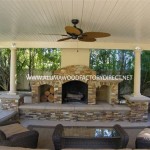How To Stop Green Algae On Patio Slabs
Green algae growth on patio slabs is a common problem, particularly in damp, shaded areas. This unsightly film not only detracts from the appearance of outdoor spaces but can also create a slippery surface, posing a safety hazard. Addressing this issue effectively requires understanding the causes of algae growth and implementing preventative measures alongside appropriate cleaning methods.
Understanding Algae Growth
Algae thrive in moist, nutrient-rich environments. Patio slabs, especially those in shaded locations or areas with poor drainage, provide ideal conditions. Factors such as overhanging trees, which limit sunlight and contribute to dampness through leaf litter, can exacerbate the problem. Additionally, organic matter like pollen and dirt can accumulate on the surface, providing a food source for algae.
The porous nature of certain paving materials, such as concrete, allows water to be absorbed, further promoting algae growth. Regular cleaning combined with preventative measures is crucial to controlling and eliminating algae from patio slabs.
Effective Cleaning Methods
Several methods can effectively remove existing algae from patio slabs. The appropriate method depends on the severity of the infestation and the type of paving material.
Pressure washing offers a powerful cleaning solution, effectively blasting away algae and other surface debris. However, caution should be exercised, as excessive pressure can damage some paving materials. For delicate surfaces, a lower pressure setting or alternative cleaning method is recommended.
Chemical treatments, such as algaecides or bleach solutions, can also be effective. Always follow manufacturer instructions carefully when using chemical treatments, and ensure adequate ventilation. It's important to be aware of the potential environmental impact of chemical use and consider eco-friendly alternatives whenever possible.
Scrubbing with a stiff brush and a solution of warm water and detergent is a less aggressive but effective approach for lighter algae growth. This method is particularly suitable for delicate surfaces or areas where the use of pressure washers or chemicals is impractical.
Preventing Algae Growth
Preventing algae growth is often more effective than relying solely on cleaning. Several preventative measures can significantly reduce the likelihood of algae establishing itself on patio slabs.
Improving drainage can help prevent water from pooling on the surface. This can be achieved by ensuring the slabs are laid with a slight slope or by installing drainage channels. Addressing any underlying drainage issues in the surrounding area is also crucial.
Trimming overhanging branches allows more sunlight to reach the patio surface, creating a less hospitable environment for algae. Regular sweeping or brushing removes organic matter, depriving algae of a food source. These practices combined with good drainage can significantly minimize algae growth.
Choosing the Right Paving Material
When installing new paving, consider materials less susceptible to algae growth. Smooth, non-porous materials like porcelain or natural stone are generally less prone to algae colonization than porous materials like concrete. Choosing lighter-colored paving can also help, as these reflect more sunlight, reducing dampness and making the environment less favorable for algae.
While these materials may offer better resistance, regular cleaning is still recommended to maintain a clean and algae-free patio.
Regular Maintenance
Regular maintenance is key to managing algae growth. Implementing a routine cleaning schedule, even in the absence of visible algae, helps to prevent its establishment. This can involve sweeping or brushing the patio regularly to remove organic debris and occasionally washing the surface with water and detergent or a specialized patio cleaner.
The frequency of cleaning will depend on factors such as the local climate, the amount of shade, and the type of paving material. Monitoring the patio for early signs of algae growth allows for prompt action, preventing the problem from becoming more severe and difficult to manage.
By understanding the factors that contribute to algae growth and employing a combination of preventative measures and effective cleaning methods, homeowners can maintain a clean, safe, and attractive patio environment.

Best Tips On Cleaning Patio Slabs How To Get Rid Of Algae

How To Stop Green Mould And Algae From Growing On Your Patio Pro Kleen

How Do I Remove Green Algae From My Patio Stoneworld Oxfordshire

Patio Turning Green How To Fight Algae

Best Tips On Cleaning Patio Slabs How To Get Rid Of Algae

Maintaining Clean Paving Using Biocides

Remove Algae And Lichen Off Patio Pavers Like Rick Wet Forget Blog

My Patio Slabs Were Covered In Green Algae I Cleaned Them 10 Minutes With An Buy No Pressure Washer Needed The Sun
.jpg?strip=all)
Cleaning Block Paving What Causes Algae Growth

How To Clean Green Algae Off Patio Tiles Easily
See Also








